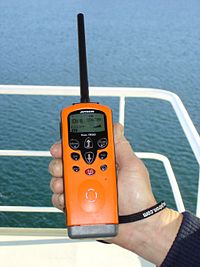
Photo from wikipedia
Unmanned aerial vehicles (UAVs) for wireless communications have rapidly grown into a research hotspot as the mass production of high-performance, low-cost, and intelligent UAVs becomes practical. In the meantime, the… Click to show full abstract
Unmanned aerial vehicles (UAVs) for wireless communications have rapidly grown into a research hotspot as the mass production of high-performance, low-cost, and intelligent UAVs becomes practical. In the meantime, the fifth generation (5G) wireless communication and Internet-of-Things (IoT) technologies are being standardized and planned for global deployment. During this process, UAVs are becoming an important part of 5G and IoT, and expected to play a crucial role in enabling more functional diversity for wireless communications. In this paper, we first present a summary of mainstream UAVs and their use in wireless communications. Then, we propose a hierarchical architecture of UAVs with multilayer and distributed features to facilitate the integration of different UAVs into the next-generation wireless communication networks. Finally, we unveil the design tradeoffs with the consideration of power transfer, wireless communication, and aerodynamic principles. In particular, empirical models and published measurement data are used to analyze power transfer efficiency, and meteorological impacts on UAVs enabled next-generation wireless communications.
Journal Title: IEEE Internet of Things Journal
Year Published: 2019
Link to full text (if available)
Share on Social Media: Sign Up to like & get
recommendations!